How to get consumers to bite on your direct marketing offer and net more sales
Bill Spink Creative That Sells, Response Marketing, Trends and POV, DM LiteReeling in marketing inspiration from the ‘ol fishing hole.
As marketers, we’re all asked every day to lure consumers our way, find ways to hook them, and reel them in: To attract curious shoppers and land them as converted sales.
Of course, you’ve seen through the subtle inuendo (not to mention the blog post title) and deduced we’re angling to explore the parallels between direct marketing and fishing. A major challenge for all of us tasked with driving measurable sales, is finding ideas and inspiration. Constantly finding new perspectives to keep our strategies and tactics fresh and help capture incremental results isn’t easy.
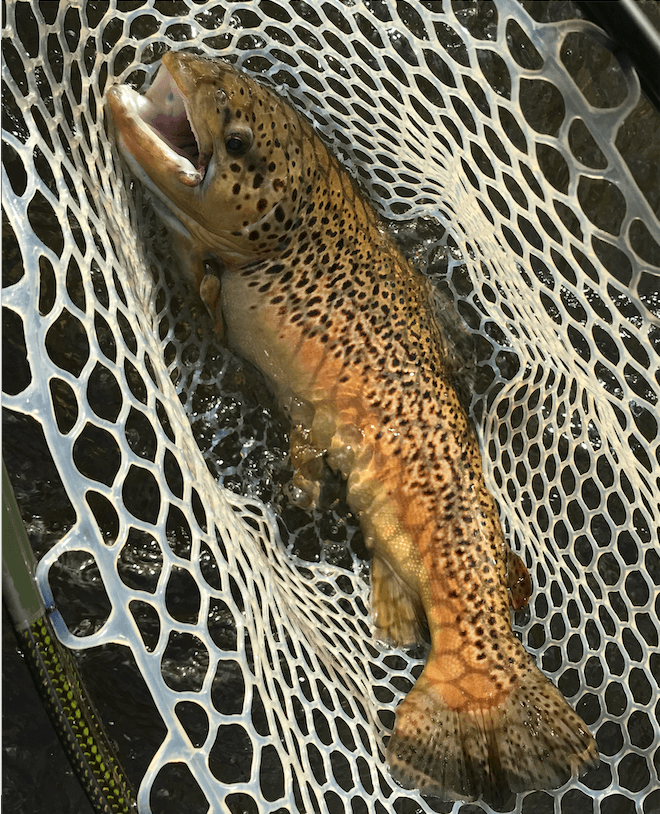
Looking at a different discipline, exploring problem-solving techniques totally outside your everyday routine and the rules that pen you in, is a great way to see things fresh. And it just so happens that two key members of our DMW team are accomplished direct marketers and avid fisherman: Len Zappolo, Senior Director of Media Services, and Kevin Breen, Creative Director.
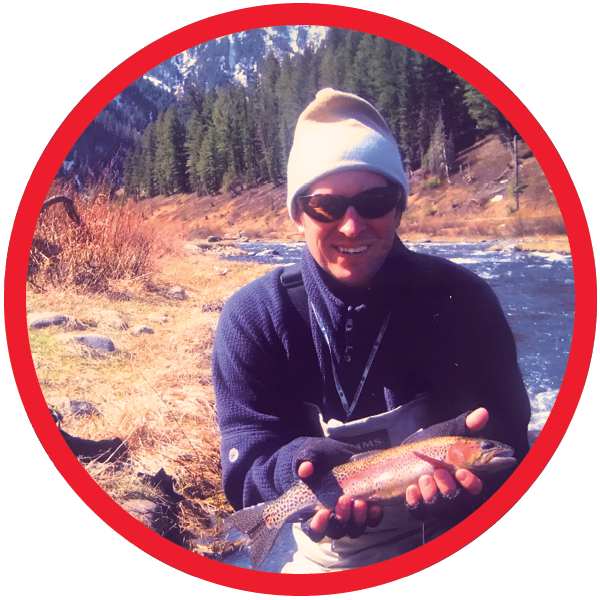
Kevin: I think “obsessed” might be more accurate than “avid.” Why else would you stand out in the freezing cold of winter to catch fish?
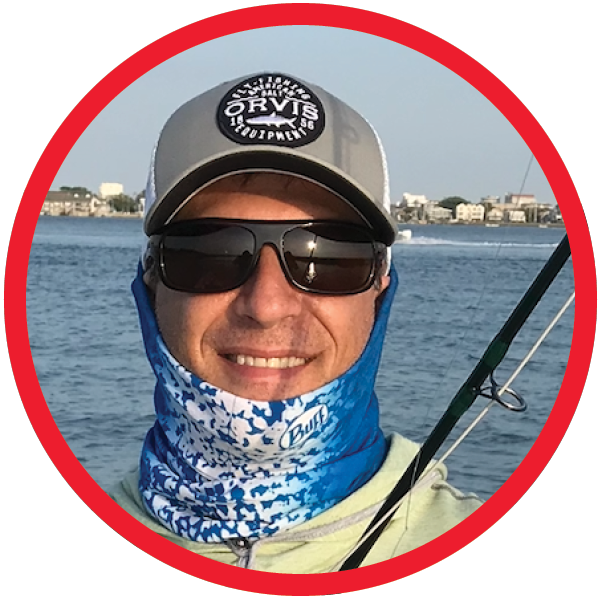
Len (laughing): Completely agree: Fishing doesn’t stop just because the temps drop!
The game’s afoot (or afloat)
“Obsessed” it is then. Let’s dive into a conversation exploring how you guys go about catching some of our planet’s most elusive prey — brown, brook, and rainbow trout — and see what new insights we might glean to help us attract what can seem to be an even more elusive target: new customers.
To start us off: I’ve always appreciated how direct marketing is totally accountable and results-focused. It’s not about what you like, it’s “Did you figure out the consumer — and did it work?” It feels great when you make something happen. I’m imagining it’s a similar buzz when you’re out fishing?
Len: Very much so. It’s just so rewarding … to go figure out what they’re eating, go back and tie up the flies to attract them … then go cast and present the fly, let it drift downstream just right – hook them, play them in and land the fish – so very satisfying.
Kevin: Totally agree, and it’s very similar to what we do in marketing, right? We work to craft the right message, use the right colors and fonts, create an image that’ll resonate with the audience, and of course, give them a clear CTA. Then, present those in a format and layout that is going to get the prospect interested, and ultimately: take the desired action.
Of course, a big difference at the day job: your wife isn’t wondering why there’s a tray full of creepy bugs in the house.
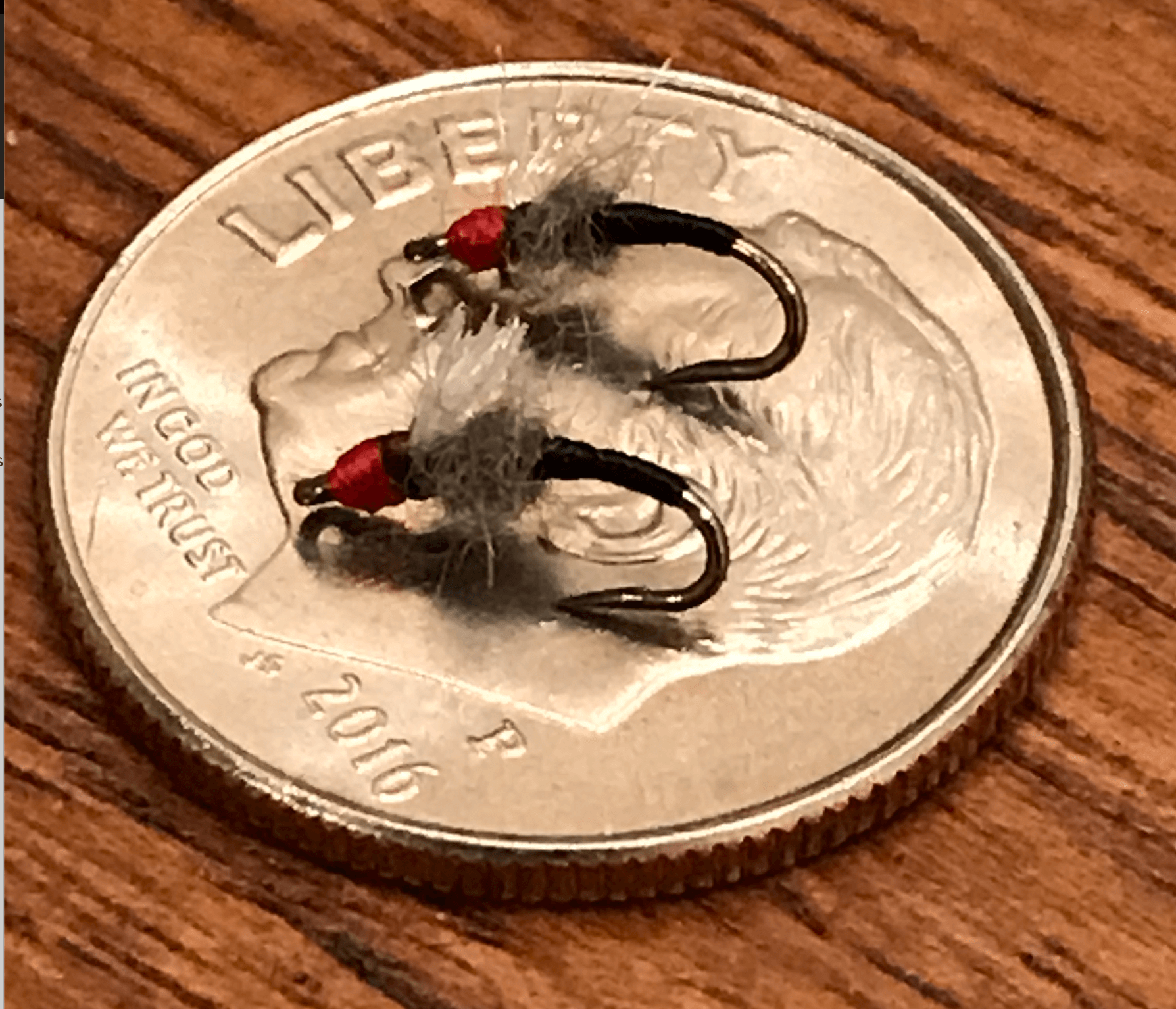
Scouting the stream — getting smart before just “casting about”
I am guessing, similar to direct marketing, you don’t start by just tossing a hook in the water, you do some homework.
Len: In the big picture, not unlike humans, trout need three things to survive: water, shelter, and food. Big surprise, right? Ok, not quite, but then it gets complicated.
Kevin: If I were to walk up to a stream without knowing all the factors needed to be successful … like what insect hatch is currently happening and what time of day does that happen … is the water clear or slightly off color … did it rain last night … even what exact variety of fish I am trying to catch, I’m probably going to get skunked.
Not so terrible when I’m fishing, it’ll just cost me the gas to drive there. If a marketer takes that approach, it could end up costing them hundreds of thousands of dollars. And they’re not going to land anything either.
Right, the consequences are greater. But either way, you’re saying you want to start by examining your target’s needs and desires … and take nothing for granted from the “last time” you were at a stream, even the same stream.
Len: Absolutely. You don’t make assumptions. Where are they in the water? They are not everywhere. Are they behind rocks? Sweeping the bank under the trees? Glued to the bottom? They move around. And even when you locate them, you still have to determine what they’re looking for: what they’re eating. It’s like picking “the” media channel to reach people isn’t enough. Promoting on “TV,” say, that’s not specific enough. The daypart or program you advertise in can make all the difference in the world.
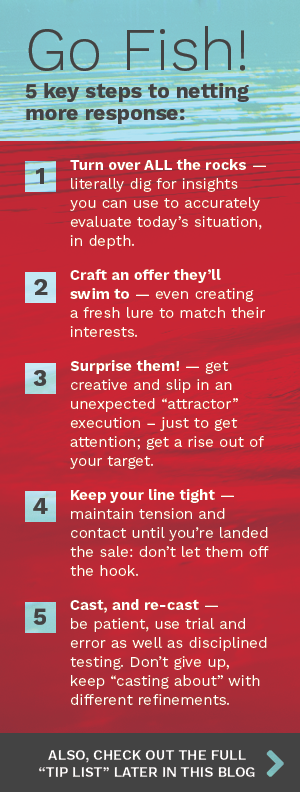
Kevin: The fun thing is to get in the water … literally turn over the rocks and inspect things firsthand, up close and personal. Even then, it isn’t easy. I’ve been a direct marketer for many years now and have been fishing even longer. I’ve managed to figure out the advertising side of things, and how to create compelling creative that will get people to respond. I’m still trying to figure out these damn fish.
It’s all about a compelling offer … luring them in
Step one: you challenge what you think you might know to locate and target the fish fresh that day. Then, it’s ultimately all about what you offer them. Just as in direct marketing: first you target; then the offer takes center stage.
Len: And to get that right, I have to know, what are they eating? Is there something new hatching? Because now they’re not so attracted by the everyday food that’s always in the stream. What they are searching for can be different every single day. And then: exactly where are they looking for it? Sometimes you can see what they’re eating above the water, but 90%+ of the time it’s below the surface. So, as Kevin says, you have to dig. You need to poke around and find what the trout are eating and where – right now.
Then, there are all kinds of flies we can use to lure them: wet, dry, emerger, nymph, streamer (baitfish) different colors, many possible variables, and sizes, too. It all goes to getting the right offer — and doesn’t that sound familiar to our 9-to-5? Then you pick “the” fly that best matches what they’re consuming … or you tie your own for a more perfect match to get their interest.
I can see how going to that extra effort, crafting a new, custom lure you didn’t have stocked in your “fly box,” can pay off. But there’s a lot riding on that one hook, isn’t there?
Len: Well … it’s not unusual to use two flies at once. On the stream, that can be a dry/dropper (dry fly and nymph), or two nymphs, or a nymph and streamer. It’s like how we marry digital and TV; or direct mail, email, and social or whatever mix. Or give prospects more than one asset to download — and just like fishing: it has to be the right bait. You would likely not just use a singular approach. And you want to mix it up.
It sounds pretty scientific, cut and dried … is it?
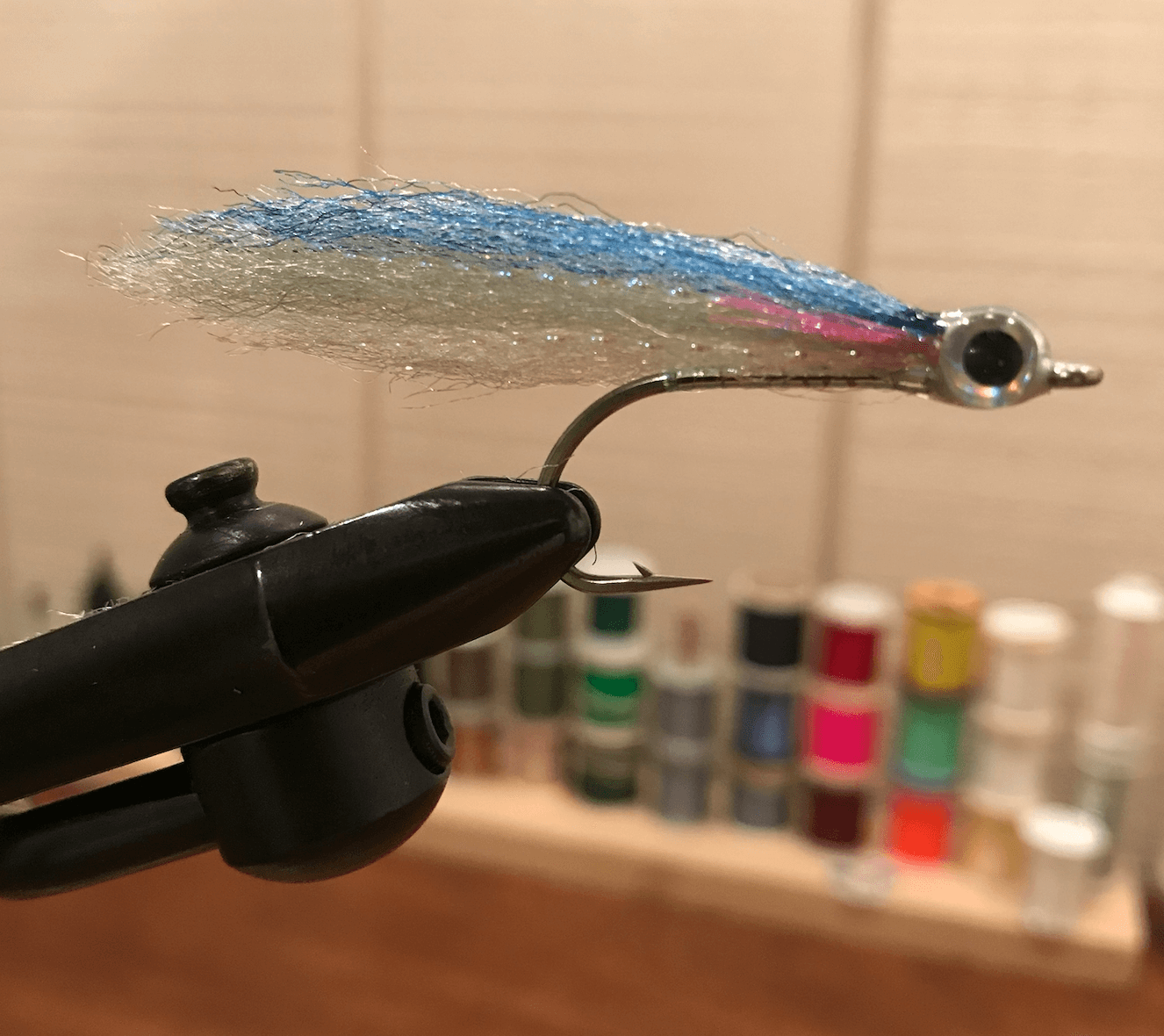
Len: There’s no formula, no. And there’s plenty of room for innovation. After trying to match what we see them literally going after, sometimes we use “attractor patterns” just to pique curiosity. Beyond what you naturally see … you introduce a wild hair – and with trout flies that can be quite literally true! Sometimes that out-of-left-field execution is the best thing you did all day. You always want to be exploring and testing another combo.
Test, test, test
Over time at DMW, we’ve sat and talked so much about how to devise tests for clients, it sounds like that’s a natural thought process after your years of fishing.
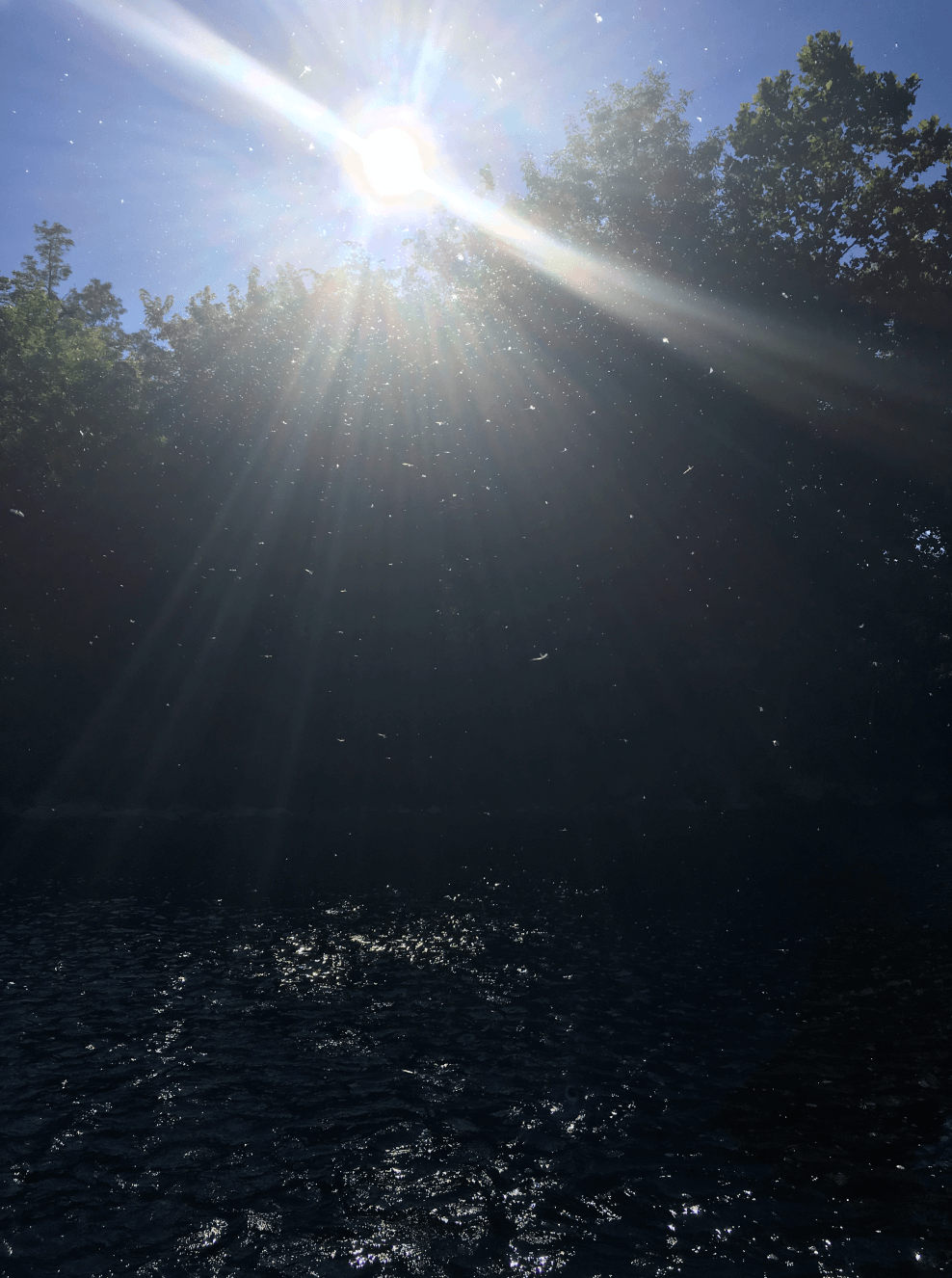
Len: It has to be. You may not get it exactly right the first time. You may need a slightly different pattern — or even size! Once on a stream I came to an early morning Trico hatch. Tricos are extremely small mayflies. The hatch was on and so were the fish. Problem was, I couldn’t catch one trout. I knew what they were eating. I knew I had the right fly pattern. Why would they not take my fly? In this case, I downsized from a size 20 to a size 22 hook, and the fishing got red hot!
Reeling them in
A good reminder that turning things around isn’t always about a total overhaul, and even after you “hook ‘em,” you’re not done. What’s key when you’re “reeling them in?”
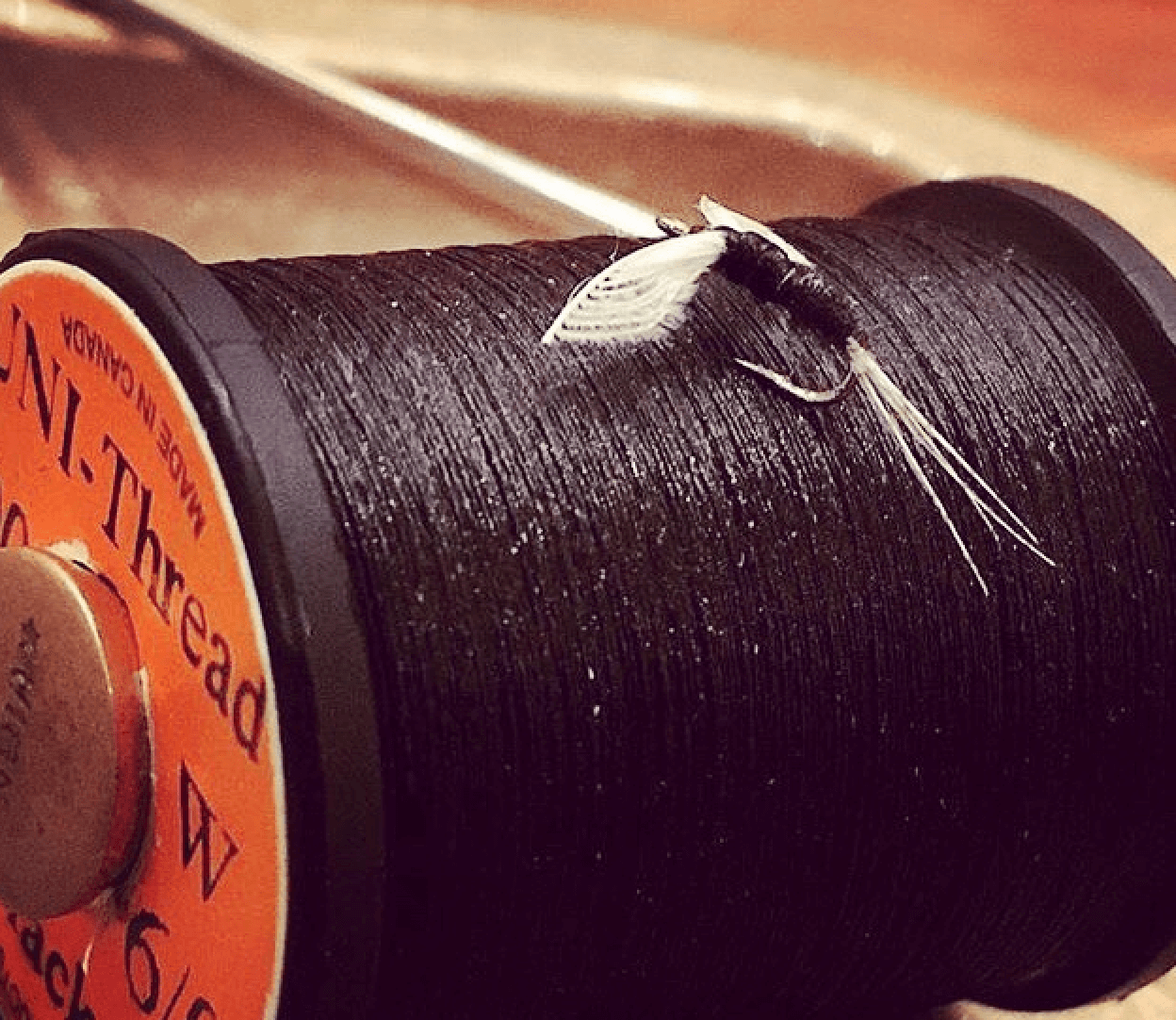
Kevin: “Tension” is a big thing I work on when teaching my kids to fish. Too much slack, the fish will “spit the hook” and you’ve lost them. Too much tension, having the drag on your reel not set properly, you could break the line. Lost ‘em again.
It’s kind of similar to what we do with our campaigns – keeping the proper “tension” with prospects. Using follow-up emails, a series of mailings, retargeting digital ads, are just a few examples. Just don’t let the prospect get away.
Now let’s talk about hypertension, which is what I get when I take my kids fishing 😉
It’s always the “little things” that get you, isn’t it? And I’m hearing from both of you, from feeling tension in the line, to picking the perfect lure, what’s key is being fully attentive. Take nothing for granted. It’s different every time: a different fish (consumer), a different day, different weather, you need to be alert, observant and handle things uniquely each time out.
What time is the “right time?”
And then there’s the right thing at the right time. At this point, I’m betting that old adage about getting up at the crack of dawn isn’t 100% dead-on, either.
Kevin: While there is some truth in the notion that you have to get up at 5 a.m. to catch fish, that does not always apply. Trout will feed all day long. Some of my most productive outings happened during an insect hatch in the middle of a sunny afternoon. Striped bass and weakfish turn on at dusk and prefer to feed under the cover of darkness. Point being, there are always opportunities if you know where to look. Don’t let the time of day or even the time of year hold you back.
Len: While I’m nodding in agreement with Kevin, sometimes the early bird really does get the worm. Having the stream all to yourself, with fish that haven’t been disturbed, is akin to having your prospects all to yourself. The timing of your offers can make all the difference.
What’s the net-net?
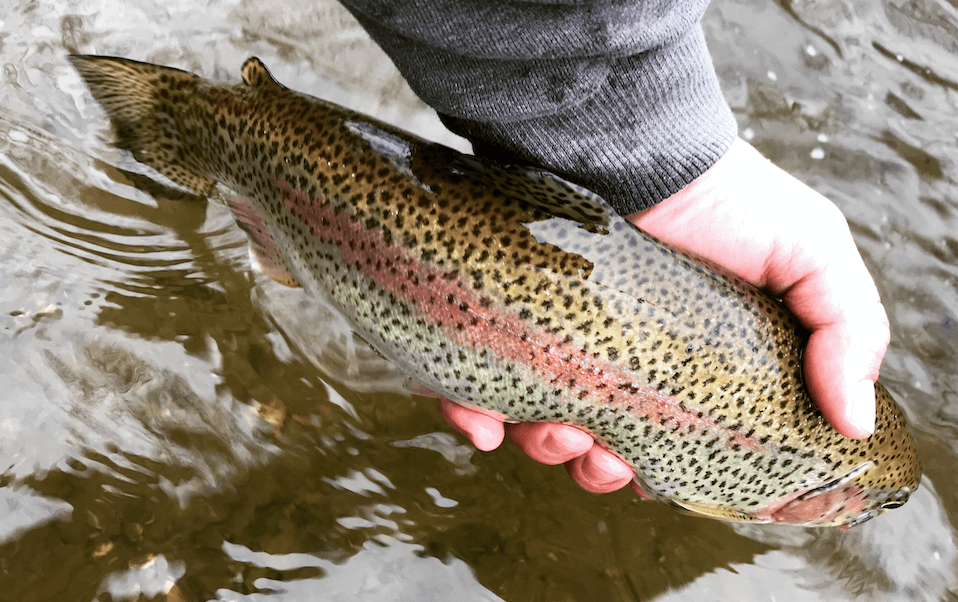
This has been great. On behalf of all of us dabblers with a fishing pole, but facing full-time challenges in marketing and selling, there have been some excellent takeaways:
While most of us think we know the territory, and our selected consumer audience, you’ve given us some excellent tips and tactics to think about:
- Go in with fresh eyes and no assumptions — assume that it’s likely there is something new to help you maximize your catch this time out and go looking for it.
- Be keenly observant — and alert to anything you may be able to tie into to gain attention and attract our consumer.
- Look for the what, when, and where — closely examine all factors.
- Craft a custom offer — while “off the shelf” may be okay — you might hit gold with something crafted specifically for your prospect in the current moment.
- Tweak it up — when your instinct and experience says “this should work,” explore refinements to take it over the top, rather than re-inventing the wheel, or giving up!
- Take them by surprise — in our never-ending quest for ultimate results, test an “attractor” offering, piquing curiosity and exploring beyond empirical analysis and focus-group insights.
And finally — Just Go For It! From Kevin’s opening remark about having an “obsessive” dedication to getting out on the water regardless of weather, to Len’s agreement not to let the time of day hold you back — the most important thing is to be there! And a final thought:
Len: When I fail on the stream it is due to a combination of wrong fly, wrong presentation, or I’ve applied the wrong pressure on hookset. When I succeed, it’s a combination of everything working perfectly together.
For me, if I were going to get all of that working together out fishing, I’d like to have an experienced angler like Len or Kevin by my side. If you’d like a seasoned, experienced direct marketing team to help you plan, execute, and reel in maximum results, contact DMW here.